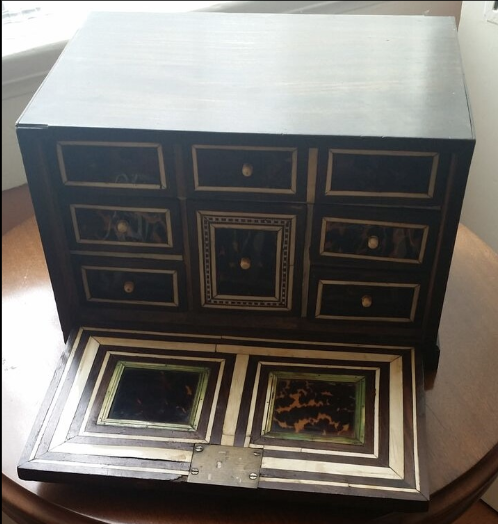Curiosity Chest, c. 1800
Donated by Mr. Robert W. McClendon, this c. 1800 miniature curiosity chest features a rosewood fall-front with three false drawers. When opened, the tortoiseshell and ivory inlay of the inner drawers is exposed. Curiosity chests are miniature versions of "Cabinets of Curiosities," rooms dedicated to the display of natural and manmade artifacts, that became popular in Renaissance Europe; before the late 17th century, curiosity chests primarily served as receptacles for private collections of artifacts, which encouraged the understanding of their significance, in aristocratic homes. Due to growing appreciation for the arts during the Renaissance, cabinets of curiosity and curiosity chests paved the way for the opening of the first museums, such as the Ashmolean Museum, which opened in 1683. They are therefore regarded as the origin behind the concept of history and art museums and also contributed to the studies of archaeology and anthropology.
Written by: Evan Albritton | Source: https://bit.ly/3wbeLVK

